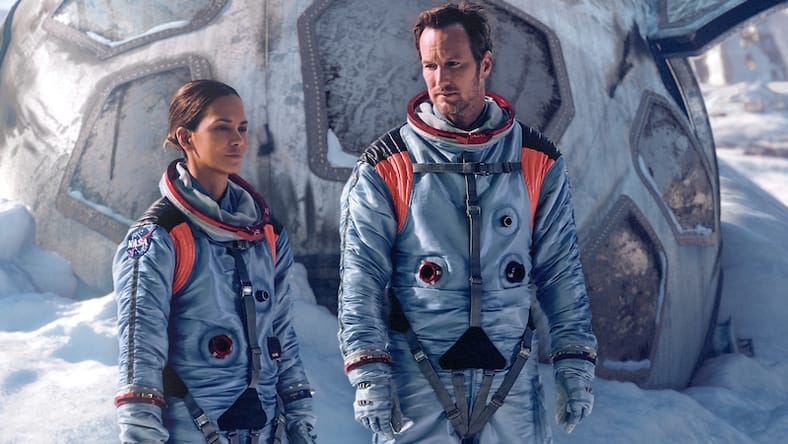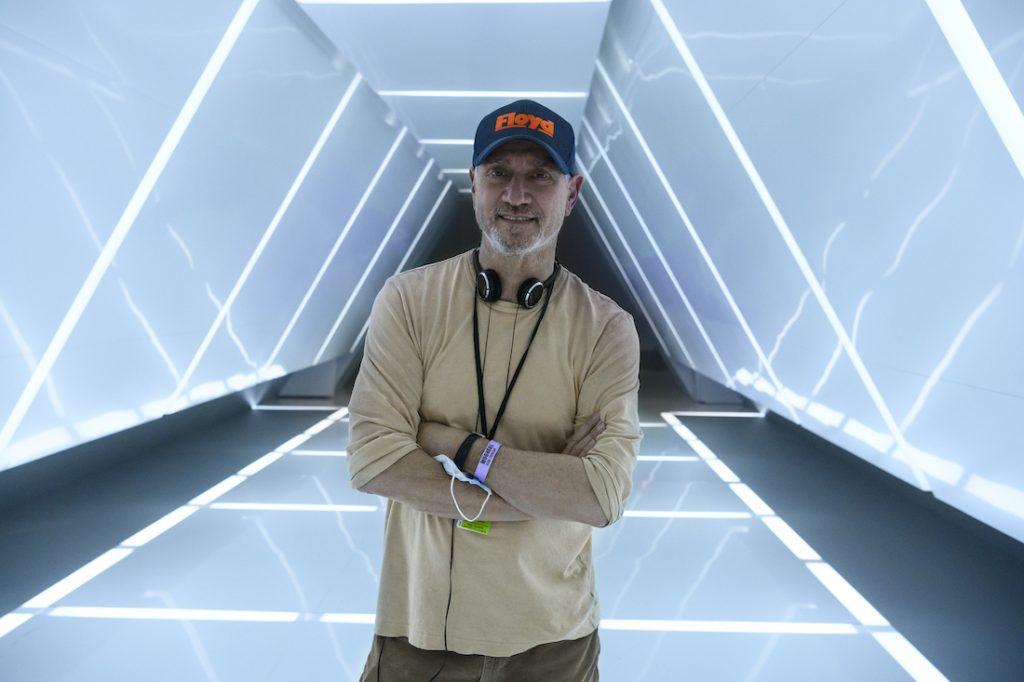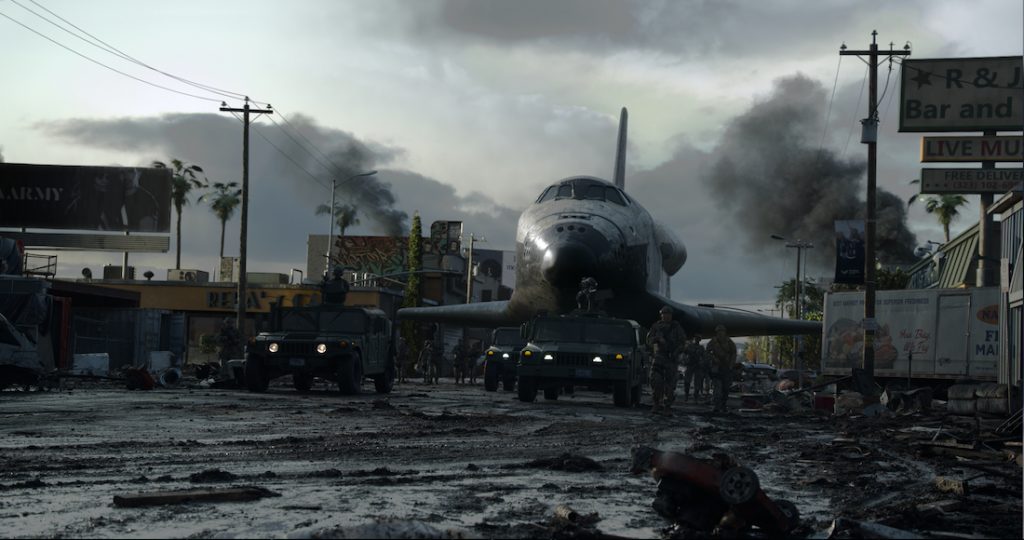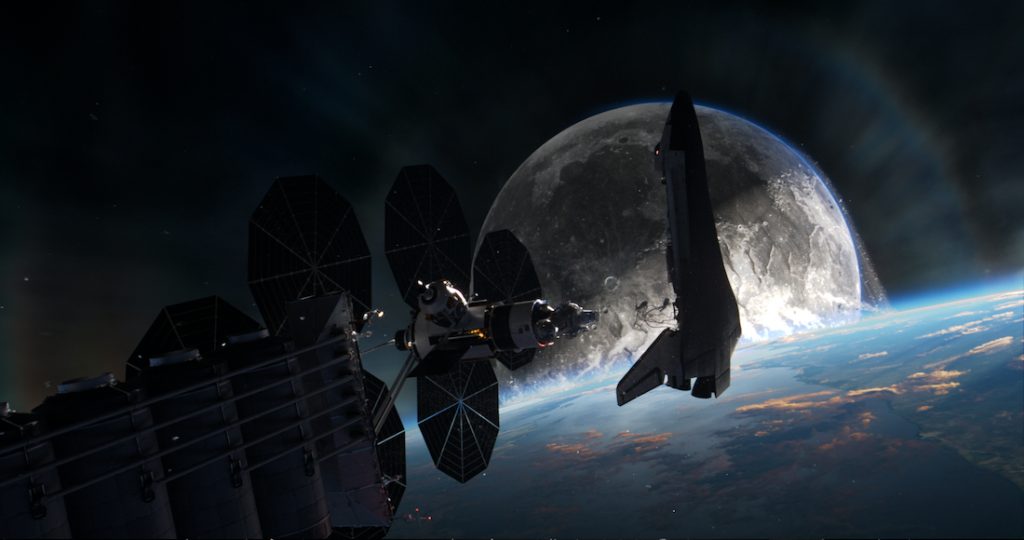
For Moonfall director Roland Emmerich, filmmaking begins with a simple image. In The Patriot, it was two forces converging on each other against all reason as cannonballs fire and wretched injuries accrue. In 2012, it was water flooding over the Himalayas. In Independence Day, it was a spaceship covering the sky.
For his new film Moonfall, he says, “it’s the idea that the moon is not what we think it is.” In the film, a mysterious force knocks the Moon from its orbit around Earth, sending it hurtling on a collision course with life as we know it. As the world is on the brink of annihilation, a team of unlikely heroes mounts a mission into space, leaving behind everyone they love.
From simple images, Emmerich writes something like an outline containing everything that will happen in the film. He writes “in a very short form — two to three pages, that’s it. It cannot be longer than that. It gets too long, too complicated.”
It’s striking that a director known for seam-stretching blockbusters insists on boiling it down to something so spare. But simplicity is part of how Emmerich makes room for individual character development, the stuff that makes us care about these people we’re watching as they fend for their lives through sweeping set pieces and existential fights.
“If there’s no inciting incident, you’re missing something. If there’s not a shuttle mission, something goes wrong, something happens, then you’re starting on the wrong foot. It’s a two-, three-minute scene, and it sets up the whole film.”

Director Roland Emmerich on the set of Moonfall. Photo by Reiner Bajo/Lionsgate. Main image (above): Halle Berry and Patrick Wilson in Moonfall
Character Driven
Roland Emmerich says the way to find small moments is to think deeply about characters, to find their individual motivations. “I really believe in not cluttering characters too much. They’re really on one line.”
Emmerich also believes in simplicity when choosing actors. “What you do is you ask yourself, what is the character’s problem? And then you say, who could play them? Most of the time there are only two or three actors who could do what you’re looking for.”
Putting an “everyman” in an extraordinary scenario is another Emmerich trademark. “For me, it’s all about survival.” Though known for his spectacular action scenes, he often shoots his action first just to get it out of the way, because he finds more joy in working with the actors.
“When you look at my movies, there’s actually not much action,” he says. “There’s a moment when they encounter the impossible. I don’t like much to shoot action. I’m luckier with the character scenes. A lot of the time what I do, most of these shots are full CG.”
Designing Those Action Scenes
“I’ve noticed I have a lot of planes in my films, maybe because my uncle was a fighter pilot,” he laughs. “Aerial battles are a given for me. But even when you do a movie like Independence Day or Midway, flying stuff is really great, because you never have to do much action.”

You know things aren’t going well when a space shuttle is rolling through Los Angeles
His process for action scenes involves seven to eight months of pre-visualization.
“These days I go straight to pre-visualization. I like to keep it very simple because, in the end, it’s all the little things anyway,” he says.
All that pre-viz pays off when it’s time to communicate his ideas to his full team.
“Most of the time it’s the one or two weeks before the shoot that are even more important than what you do on the first day, because you pretty much fire as many notes at your crew as possible. Those two weeks are murder, honest to God, it’s murder because you get asked to go to meeting to meeting to meeting for sometimes 12 or 14 hours.”
Emmerich relaxes just a little when he gets to the first day on set, knowing that he’s spent plenty of time preparing everyone for what’s ahead.
Feeling Scene
Getting to the core of Emmerich’s work always comes down to scene work between actors and the camera. Setting a scene can often be the hardest feat on set, but Emmerich again tries to keep it simple.
Also read: Jackass Forever Director Jeff Tremaine on Bringing Back a Ball-Busting Stunt
“Most of the time what I do is shoot a master. If you don’t have a master, how do you ever come to a good scene? I spend quite some time on masters. Sometimes it’s one or two, three hours, doesn’t matter, and then you can place the actors,” he says.
He likes to see the actors all together. With two people it can be simple, but it gets more complicated the more actors he adds to the scene. Without the master shot, he can’t know how to shoot the scene.

A shot from space Moonfall, from director Roland Emmerich
Emmerich will sometimes shoot an entire scene with a Steadicam, even if there are unusable parts, just to create a flow.
“And then you move and shoot your close ups,” he explains.
Large-scale action scenes can often get muddled into a splash and clash of images and sounds, leaving the audience lost and confused. Creating a sense of geography within a set piece is daunting — think of those battle sequences in The Patriot. But he has several techniques to help the audience keep track of what’s happening.
“I put, in the middle of the battlefield, a ruin — because of that you know exactly where everyone is.”
One Son
“I think I’d like to do a big TV show next, called Those About to Die. It’s about the sports business in Ancient Rome.” Emmerich gushes about his love of Ben-Hur and the sword-and-sandal genre. “Give me anything like that.”
Asked for his advice to moviemakers, he sticks to his refrain: “Keep it more simple. If you have two sons in a story, cut it down to one son.”
Moonfall, directed by Roland Emmerich, opens in theaters Friday. Photos courtesy of Lionsgate
Share:

